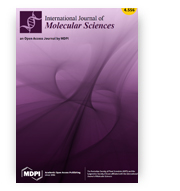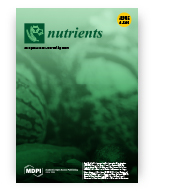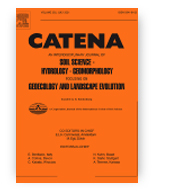Nanohydroxyapatite as a Biomaterial for Peripheral Nerve Regeneration after Mechanical Damage—In Vitro Study
Benita Wiatrak, Paulina Sobierajska, Marta Szandruk-Bender, Paulina Jawien, Maciej Janeczek, Maciej Dobrzyński, Patrycja Pistor, Adam Szeląg, Rafał Wilgusz
International Journal of Molecular Sciences
 Hydroxyapatite has been used in medicine for many years as a biomaterial or a cover for other biomaterials in orthopedics and dentistry. This study characterized the physicochemical properties (structure, particle size and morphology, surface properties) of Li+- and Li+/Eu3+-doped nanohydroxyapatite obtained using the wet chemistry method. The potential regenerative properties against neurite damage in cultures of neuron-like cells (SH-SY5Y and PC12 after differentiation) were also studied. The effect of nanohydroxyapatite (nHAp) on the induction of repair processes in cell cultures was assessed in tests of metabolic activity, the level of free oxygen radicals and nitric oxide, and the average length of neurites. The study showed that nanohydroxyapatite influences the increase in mitochondrial activity, which is correlated with the increase in the length of neurites. It has been shown that the doping of nanohydroxyapatite with Eu3+ ions enhances the antioxidant properties of the tested nanohydroxyapatite. These basic studies indicate its potential application in the treatment of neurite damage. These studies should be continued in primary neuronal cultures and then with in vivo models.
Hydroxyapatite has been used in medicine for many years as a biomaterial or a cover for other biomaterials in orthopedics and dentistry. This study characterized the physicochemical properties (structure, particle size and morphology, surface properties) of Li+- and Li+/Eu3+-doped nanohydroxyapatite obtained using the wet chemistry method. The potential regenerative properties against neurite damage in cultures of neuron-like cells (SH-SY5Y and PC12 after differentiation) were also studied. The effect of nanohydroxyapatite (nHAp) on the induction of repair processes in cell cultures was assessed in tests of metabolic activity, the level of free oxygen radicals and nitric oxide, and the average length of neurites. The study showed that nanohydroxyapatite influences the increase in mitochondrial activity, which is correlated with the increase in the length of neurites. It has been shown that the doping of nanohydroxyapatite with Eu3+ ions enhances the antioxidant properties of the tested nanohydroxyapatite. These basic studies indicate its potential application in the treatment of neurite damage. These studies should be continued in primary neuronal cultures and then with in vivo models.
10.3390/ijms22094454
Oxidative Stress at Birth Is Associated with the Concentration of Iron and Copper in Maternal Serum
Karolina Rak, Karolina Łoźna, Marzena Styczyńska, Łukasz Bobak, Monika Bronkowska
Nutrients
 Oxidative stress (OS) in the foetal and neonatal periods leads to many disorders in newborns and in later life. The nutritional status of pregnant women is considered to be one of the key factors that triggers OS. We investigated the relationship between the concentration of selected mineral elements in the blood of pregnant women and the concentration of 3′nitrotyrosine (3′NT) as a marker of OS in the umbilical cord blood of newborns. The study group consisted of 57 pregnant women and their newborn children. The concentrations of magnesium (Mg), calcium (Ca), iron (Fe), zinc (Zn) and copper (Cu) in maternal serum (MS) were measured by the flame atomic absorption/emission spectrometry (FAAS/FAES) method. The concentration of 3′NT in umbilical cord serum (UCS) of newborns was determined by the ELISA method. A positive correlation between MS Fe and UCS 3′NT in male newborns was shown (rho = 0.392, p = 0.053). Significantly higher UCS 3′NT was demonstrated in newborns, especially males, whose mothers were characterized by MS Fe higher than 400 μg/dL compared to those of mothers with MS Fe up to 300 μg/dL (p < 0.01). Moreover, a negative correlation between the MS Cu and UCS 3′NT in male newborns was observed (rho = −0.509, p = 0.008). Results of the study showed the need to develop strategies to optimize the nutritional status of pregnant women. Implementation of these strategies could contribute to reducing the risk of pre- and neonatal OS and its adverse health effects in the offspring.
Oxidative stress (OS) in the foetal and neonatal periods leads to many disorders in newborns and in later life. The nutritional status of pregnant women is considered to be one of the key factors that triggers OS. We investigated the relationship between the concentration of selected mineral elements in the blood of pregnant women and the concentration of 3′nitrotyrosine (3′NT) as a marker of OS in the umbilical cord blood of newborns. The study group consisted of 57 pregnant women and their newborn children. The concentrations of magnesium (Mg), calcium (Ca), iron (Fe), zinc (Zn) and copper (Cu) in maternal serum (MS) were measured by the flame atomic absorption/emission spectrometry (FAAS/FAES) method. The concentration of 3′NT in umbilical cord serum (UCS) of newborns was determined by the ELISA method. A positive correlation between MS Fe and UCS 3′NT in male newborns was shown (rho = 0.392, p = 0.053). Significantly higher UCS 3′NT was demonstrated in newborns, especially males, whose mothers were characterized by MS Fe higher than 400 μg/dL compared to those of mothers with MS Fe up to 300 μg/dL (p < 0.01). Moreover, a negative correlation between the MS Cu and UCS 3′NT in male newborns was observed (rho = −0.509, p = 0.008). Results of the study showed the need to develop strategies to optimize the nutritional status of pregnant women. Implementation of these strategies could contribute to reducing the risk of pre- and neonatal OS and its adverse health effects in the offspring.
10.3390/nu13051491
Provenance and paleoenvironmental context of the Late Pleistocene thin aeolian silt mantles in southwestern Poland – A widespread parent material for soils
Jarosław Waroszewski, Anna Pietranik, Tobias Sprafke, Cezary Kabała, Manfred Frechen, Zdzisław Jary, Aleksandra Kot, Sumiko Tsukamoto, Simon Meyer-Heintz, Marcin Krawczyk, Beata Łabaz, Bernhard Schultz, Yulia V. Erban Kochergina
Catena
 Thin loess deposits are widespread soil parent materials and important archives for paleoenvironmental reconstruction. The origin of loess in SW Poland is attributed to the Great Odra Valley (GOV), following the general concept that large rivers play a major role in regional silt supply. Yet, the precise provenance (glacier sources and/or local rocks) of silts, possibly deflated from dry GOV braided riverbeds, is not clear. Our study of thin and thick loess mantles in SW Poland for the first time indicates the provenance of thin loess based on mineralogical (MLA-SEM) and isotopic analyses (143Nd/144Nd, 87Sr/86Sr). Luminescence ages of five localities point to thin loess mantle formation during and shortly (23.0 to 17.7 ka yr) after the Last Glacial Maximum (LGM). Our isotopic data indicate that thin loess deposits in SW Poland are the mixtures of two main components – local Sudetic and Scandinavian, the latter delivered by the Fennoscandian ice sheet (FIS). Also, detailed analyses of heavy minerals show that a single mineral (e.g., hornblende) may come from both Sudetic and Scandinavian sources. This research highlights the role of the (Pleistocene) GOV in collecting and homogenizing materials, while supplying the region with fine particles to be deflated by paleowinds from open surfaces. Anomalies in mineralogy and isotopic composition are connected with influence of Sudetic mountain rivers and locally blowing silt material by katabatic winds. Regional grain size differentiation of thin loess mantles explains transport distance and altitude.
Thin loess deposits are widespread soil parent materials and important archives for paleoenvironmental reconstruction. The origin of loess in SW Poland is attributed to the Great Odra Valley (GOV), following the general concept that large rivers play a major role in regional silt supply. Yet, the precise provenance (glacier sources and/or local rocks) of silts, possibly deflated from dry GOV braided riverbeds, is not clear. Our study of thin and thick loess mantles in SW Poland for the first time indicates the provenance of thin loess based on mineralogical (MLA-SEM) and isotopic analyses (143Nd/144Nd, 87Sr/86Sr). Luminescence ages of five localities point to thin loess mantle formation during and shortly (23.0 to 17.7 ka yr) after the Last Glacial Maximum (LGM). Our isotopic data indicate that thin loess deposits in SW Poland are the mixtures of two main components – local Sudetic and Scandinavian, the latter delivered by the Fennoscandian ice sheet (FIS). Also, detailed analyses of heavy minerals show that a single mineral (e.g., hornblende) may come from both Sudetic and Scandinavian sources. This research highlights the role of the (Pleistocene) GOV in collecting and homogenizing materials, while supplying the region with fine particles to be deflated by paleowinds from open surfaces. Anomalies in mineralogy and isotopic composition are connected with influence of Sudetic mountain rivers and locally blowing silt material by katabatic winds. Regional grain size differentiation of thin loess mantles explains transport distance and altitude.
10.1016/j.catena.2021.105377









